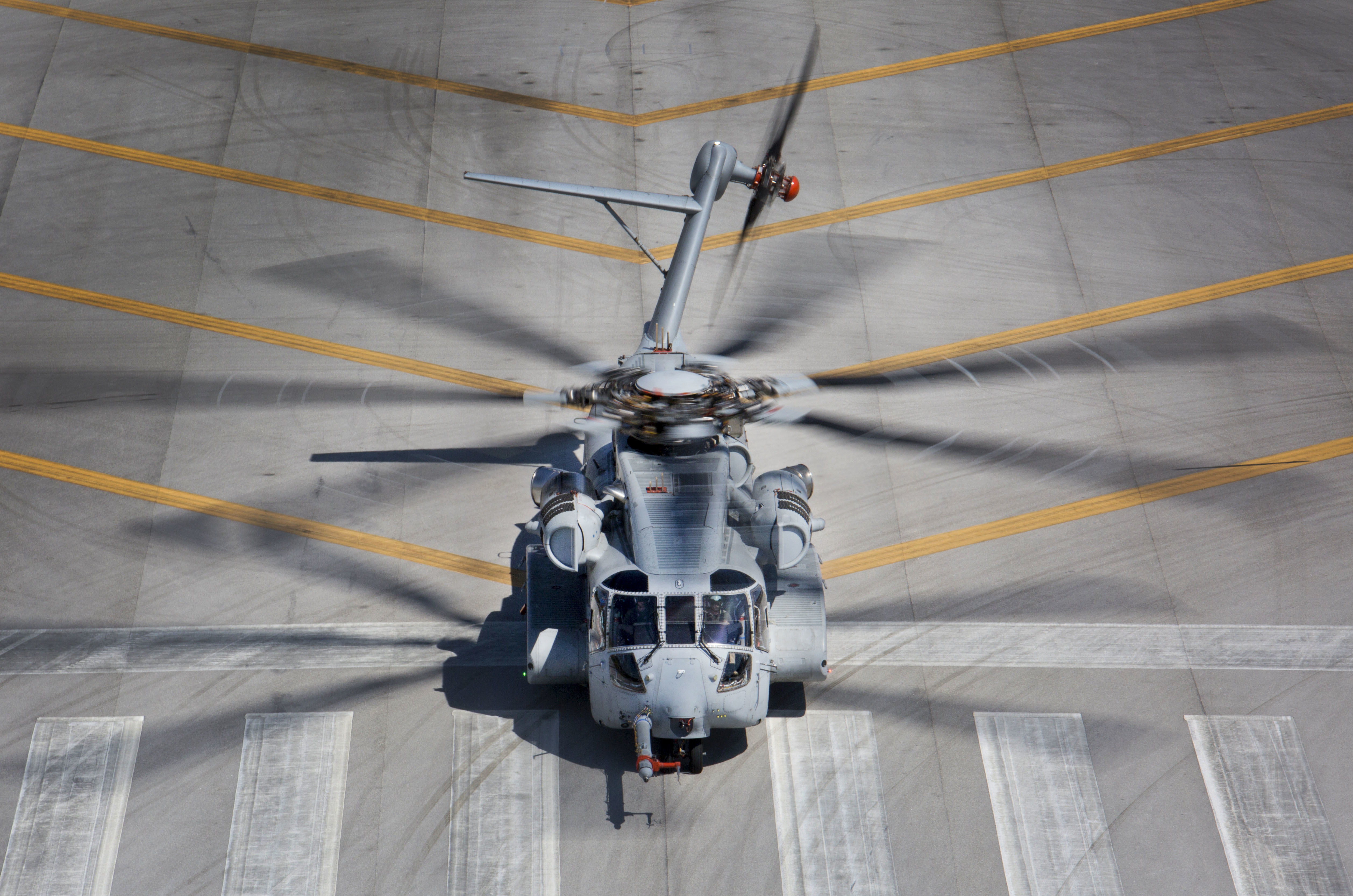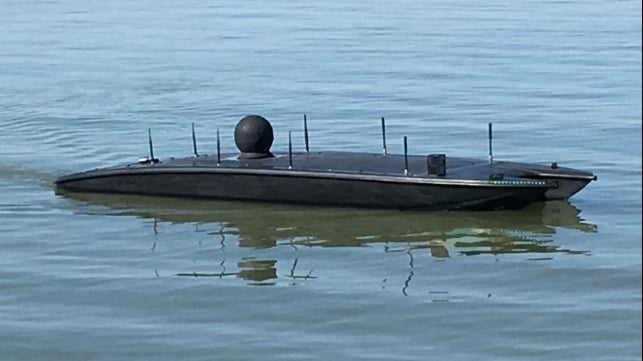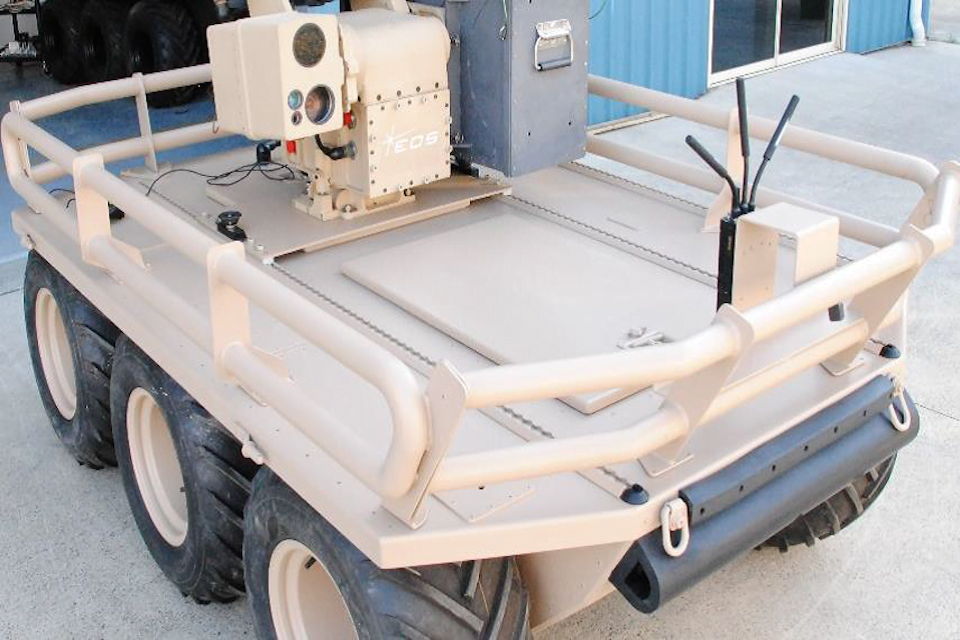By Captain George Galorisi and Dr. Scott Truver
As the USN-USMC team shapes its way ahead with regard to the Expeditionary Strike Group, several new capabilities have come to that force. First there was the Osprey; then their was the F-35; and next up will be the coming of the CH-53K.
All of these manned assets can be supplemented with new evolving unmanned capabilities which can enhance the situational awareness of the ESG force as it appraoches its objective area for operations.
Two articles on the Defense.info website, “The Bold Alligator Exercises and Calibrated Force Insertion” (https://defense.info/maritime-dynamics/2018/05/the-bold-alligator-exercises-and-calibrated-force-insertion/) and Evolving C2 for the Insertion Force (https://defense.info/multi-domain-dynamics/2018/05/evolving-c2-for-the-insertion-force/), both by Dr. Robbin Laird, highlighted initiatives the U.S. Navy and Marine Corps are undertaking to insert innovative technologies into expeditionary strike groups (ESGs).
Both articles focused on the command and control (C2) part of the C4ISR (command, control, communications, computers, intelligence, surveillance and reconnaissance) equation.
Further, they keyed on the Navy-Marine Corps Bold Alligator series of exercises, which were described in the second article as “not just exercises,” but “mission rehearsals.”
The Bold Alligator exercise series has continued to be one of the most prominent sources of innovation for the Navy and Marine Corps.
After several years of refining the ESG’s C2 capabilities, the Navy and Marine Corps have now been using demonstrations, experiments and exercises to insert new and innovative technologies that focus on the “back end” of the C4ISR acronym: intelligence, surveillance and reconnaissance, or ISR.
The reasons for this renewed focus on ISR are clear, and stem from a clear-eyed evaluation of gaps in U.S. military capabilities in 2018.
By way of explanation, at the Navy’s 2017 Current Strategy Forum in Newport, Rhode Island, the Chief of Naval Operations, Admiral John Richardson, talked about the “OODA (Observe, Orient, Decide and Act) Loop,” first made popular by U.S. Air Force Colonel John Boyd in the 1950s.
According to Colonel Boyd, decision-making occurs in a recurring cycle of observe-orient-decide-act. Admiral Richardson used the OODA Loop as a way of discussing the kinds of new technologies the U.S. Navy was fielding to fill gaps in warfighting capabilities.
While all four parts of the OODA loop are important for effective decision making and success in warfare, the “Observe” piece is arguably the most important to mission accomplishment, for without a reasonable knowledge of what is in the battlespace – friendlies, enemies, and neutrals – most plans fall apart and we never get to the Orient, Decide and Act parts of the OODA Loop.
Almost two decades ago, the then-Vice Chairman of the Joint Chiefs of Staff, Admiral William Owens, stressed the importance of this first segment the OODA Loop in his book, Lifting the Fog of War.
While we have made strides in this effort to have an omniscient view of the battlespace, there is still much to do.
Said another way, as the Duke of Wellington, famously put it, we need to, “Endeavour to find out what you don’t know by what you do; that’s what I call guessing what’s on the other side of the hill.”
As part of the continuum of inserting innovative technologies – and specifically C4ISR technologies – into Navy and Marine Corps demonstrations, experiments and exercises, two of the most important recent events, based on the number of new technologies introduced, were the Ship-to-Shore Maneuver Exploration and Experimentation (S2ME2) Advanced Naval Technology Exercise (ANTX), and Bold Alligator 2017.
These events highlighted the potential of unmanned naval systems to be force-multipliers for expeditionary strike groups and to contribute to “lifting the fog war.”
Why unmanned naval systems, and especially unmanned surface vehicles?
The reason is clear.
Unmanned surface vehicles (USVs) are especially adept at conducting the ISR mission, and are typically better suited for this mission than their unmanned aerial vehicle counterparts for several reasons, particularly their ability to remain undetected by enemy sensors, as well as their dwell time on station.
By performing near-shore intelligence preparation of the battlespace (IPB), unmanned surface vehicles increase the standoff, reach, and distributed lethality of the manned platforms they support.
For ESGs, the “Observe” portion of the OODA Loop is crucial in the opening phase of any operation.
As those involved in naval operations know, there are few missions that are more hazardous to the Navy-Marine Corps team than putting troops ashore in the face of a prepared enemy force.
For this reason, the S2ME2 ANTX focused heavily on using unmanned surface vehicles to conduct critical ISR and IPB missions against enemy formations.
The S2ME2 ANTX demonstration focused on addressing gaps in capabilities that advanced unmanned maritime systems might close for the critical ISR and IPB missions that need to accomplished before conducting theamphibious ship-to-shore mission.
Thus, S2ME2 ANTX had a specific focus on unmanned systems—especially unmanned surface systems—that could provide real-time ISR and IPB support.
During the assault phase of S2ME2 ANTX, the blue force used a USV to obtain information about enemy defenses.
The expeditionary commander selected an eight-foot Tactical Autonomous Unmanned Surface Vessel (a MANTAS USV – one of a family of stealthy, low profile, USVs).
The USV swam into the enemy port (the Del Mar Boat Basin on the Southern California coast) and relayed information to the amphibious force command center using its TASKER C2 system.
Once this larger-scale ISR mission was complete, the MANTAS USV was driven to the surf zone to provide IPB information crucial to planners.
This included obstacle location (especially mine-like objects) and beach gradient.
Carly Jackson, Space and Naval Warfare (SPAWAR) Systems Center Pacific’s director of prototyping for Information Warfare and one of the organizers of S2ME2, explained how unmanned systems supported ISR and IPB missions, noting, “We use the Navy’s organic labs and warfare centers to bring together emerging technologies and innovation to solve a specific problem.
“It’s focused on unmanned systems, with a big emphasis on intelligence gathering, surveillance, and reconnaissance.”
The importance of having unmanned systems perform this critical – and inherently dangerous – task was highlighted by Tracy Conroy, SPAWAR Systems Center Pacific’s experimentation director, who explained, “The innovative technology of unmanned vehicles offers a way to gather information that ultimately may help save lives.
“We take less of a risk of losing a Marine or Navy SEAL.”
S2ME2 ANTX was a precursor to a major Navy-Marine Corps expeditionary exercise, Bold Alligator 2017.
This live exercise was designed to demonstrate maritime and amphibious force capabilities and was focused on planning and conducting amphibious operations, as well as evaluating new technologies that support the expeditionary force.
Bold Alligator 2017 encompassed a substantial geographic area in the Virginia and North Carolina Operating Areas. Mission command was located at Naval Station Norfolk, Virginia.
The amphibious force and other units operated eastward of North and South Onslow Beaches, Camp Lejeune, North Carolina.
For the littoral mission, some expeditionary units operated in the Intracoastal Waterway near Camp Lejeune.
Due to the need to sortie amphibious ships to provide disaster assistance in the wake of hurricanes Harvey, Irma and Maria, Bold Alligator 2017 featured a smaller number of amphibious forces than previous Bold Alligator events, but did include a carrier strike group.
The 2ndMarine Expeditionary Brigade (MEB) directed events and was embarked in USS Arlington(LPD-24), USS Fort McHenry(LSD-43), and USS Gunston Hall(LSD-44).
The early phases of Bold Alligator 2017 were dedicated to long-range reconnaissance.
Continuing their commitment to inserting innovative technologies into the Bold Alligator series of exercises, for Bold Alligator 2017, the 2ndMEB used a 12-foot MANTAS USV equipped with a Gyro Stabilized SeaFLIR230 EO/IR Camera and a BlueView M900 Forward Looking Imaging Sonar, to provide ISR and IPB prior to the ship-to-shore amphibious assault phase.
Operators at the exercise command center at Naval Station Norfolk drove the six-foot and 12-foot MANTAS USVs within the Intracoastal Waterway at Camp Lejeune, North Carolina.
Both USVs streamed live, high-resolution video and sonar images to the command center. The video images showed vehicles, personnel, and other objects in the Intracoastal Waterway.
The MANTAS was also driven through the surf-zone, thereby allowing it to provide sonar images for surf-zone bottom analysis to locate objects and obstacles that could present a hazard to the landing craftduring the assault phase.
Bold Alligator 2017 underscored the importance of surface unmanned systems to provide real-time ISR and IPB early in the operation.
This allowed planners to orchestrate the amphibious assault to ensure that the LCACs or LCUs passing through the surf zone and onto the beach did not encounter mines or other objects that could disable—or even destroy—these assault craft.
Providing decision makers not on-scene with the confidence to order the assault was a critical capability and one that will likely be evaluated again in future amphibious exercises such as RIMPAC 2018, Valiant Shield 2018, Talisman Saber 2018, Bold Alligator 2018 and Cobra Gold.
There is a growing realization regarding the need to insert new technology to make the amphibious assault force more effective in the face of robust adversary defenses.
In an address at the 2018 Surface Navy Association Symposium, Marine Corps Major General David Coffman, Director of Expeditionary Warfare(OPNAV N95), noted the need to make U.S. Navy amphibious ships, “More viable, lethal and survivable, with a focus on command, control, communications, computers, cyber and intelligence (C5I).
Clearly, the ISR and IPB missions depend on these capabilities, and it is unmanned systems that can provide this function without hazarding our personnel.
From a policy perspective, the Department of the Navy (DON) has decided that it is “full speed ahead” on unmanned systems.
The number of air, surface, and subsurface unmanned vehicles envisioned in the Navy alternative architecture studies represents not only a step-increase in the number of unmanned systems in the Fleet today, but also vastlymore unmanned systems than current Navy plans call for.
The importance of unmanned systems to the U.S. Navy’s future has been emphasized in a series of documents, ranging from the revised A Cooperative Strategy for 21stCentury Seapower, to A Design for Maintaining Maritime Superiority, to the May 2017 Chief of Naval OperationsThe Future Navywhite paper.
The last document presents a compelling case for the rapid integration of unmanned systems into the Navy Fleet, noting, in part:
“There is no question that unmanned systems must also be an integral part of the future fleet. The advantages such systems offer are even greater when they incorporate autonomy and machine learning…. Shifting more heavily to unmanned surface, undersea, and aircraft will help us to further drive down unit costs.”
Moreover, as evidence that this new policy direction has “legs,” the DON has established goals for Navy and Marine Corps unmanned systems development. In a January 11, 2018 memorandum, the Assistant Secretary of the Navy for Research, Development and Acquisition, Mr. James Geurts, highlighted the importance of unmanned systems, noting in his cover letter:
“The United States Navy and Marine Corps have a strategic imperative to exploit emergent and rapidly developing unmanned and autonomous technologies. In order to accelerate the development and fielding of unmanned systems and to ensure an integrated and efficient effort, the Department of the Navy…has established aggressive goals for the acceleration of the DON’s unmanned systems and to ensure the DON remains at the forefront of these emergent capabilities.”
To support this DON initiative to move the development and fielding of unmanned systems forward as rapidly as possible, the Naval Sea Systems Command and Navy laboratories have been accelerating the development of a family of USVs and UUVs.
The Navy has partnered with industry to develop, field and test a family of USVs and UUVs such as the Medium Displacement Unmanned Surface Vehicle (“Sea Hunter”), MANTASTactical Autonomous Unmanned Surface Vessel, the Large Displacement Unmanned Underwater Vehicle (LDUUV), and others.
While unmanned systems can be an important addition to many Navy and Marine Corps missions, from our perspective, the ship-to-shore movement of an expeditionary assault force remains the most hazardous mission for a Navy-Marine Corps team.
Real-time ISR and IPB will spell the difference between victory and defeat.
For this reason, the types of unmanned systems the Navy and Marine Corps should acquire are those systems that directlysupport our expeditionary forces.
This suggests a need for unmanned surface systems to complement expeditionary naval formations.
Indeed, these USVs might well be the bridge to the Navy-after-next.
CAPT George Galorisi, a career naval aviator, who is the Director of Strategic Assessments and Technical Futures at the Navy’s C4ISR Center of Excellence; and Dr. Scott C. Truver, a Washington-based naval analyst, who manages Gryphon Technologies national security programs group and is a senior advisor at the Center for Naval Analyses.
The 2nd MEB used a large MANTAS USV, equipped with a Gyro Stabilized SeaFLIR230 EO/IR Camera and a BlueView M900 Forward Looking Imaging Sonar to provide intelligence for the amphibious assault. The sonar was employed to provide bottom imaging of the surf zone, looking for objects and obstacles, especially mine-like objects, that could pose a hazard to the landing craft as they moved through the surf zone and onto the beach.
The featured photos shows the MANTAS USV.
Also, see the following edition of defense.info highlighting remote systems:
Unmanned Systems: USMC, USN and USCG



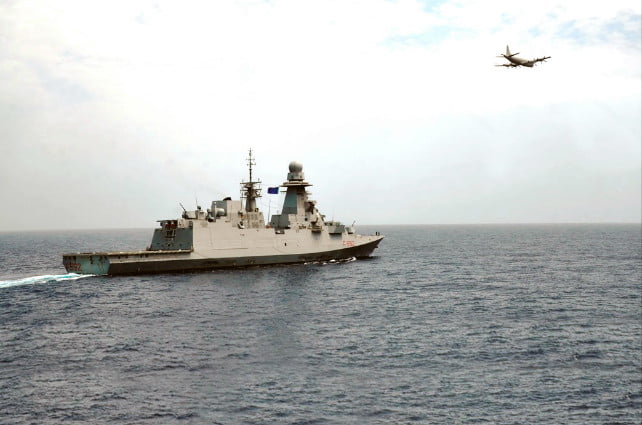
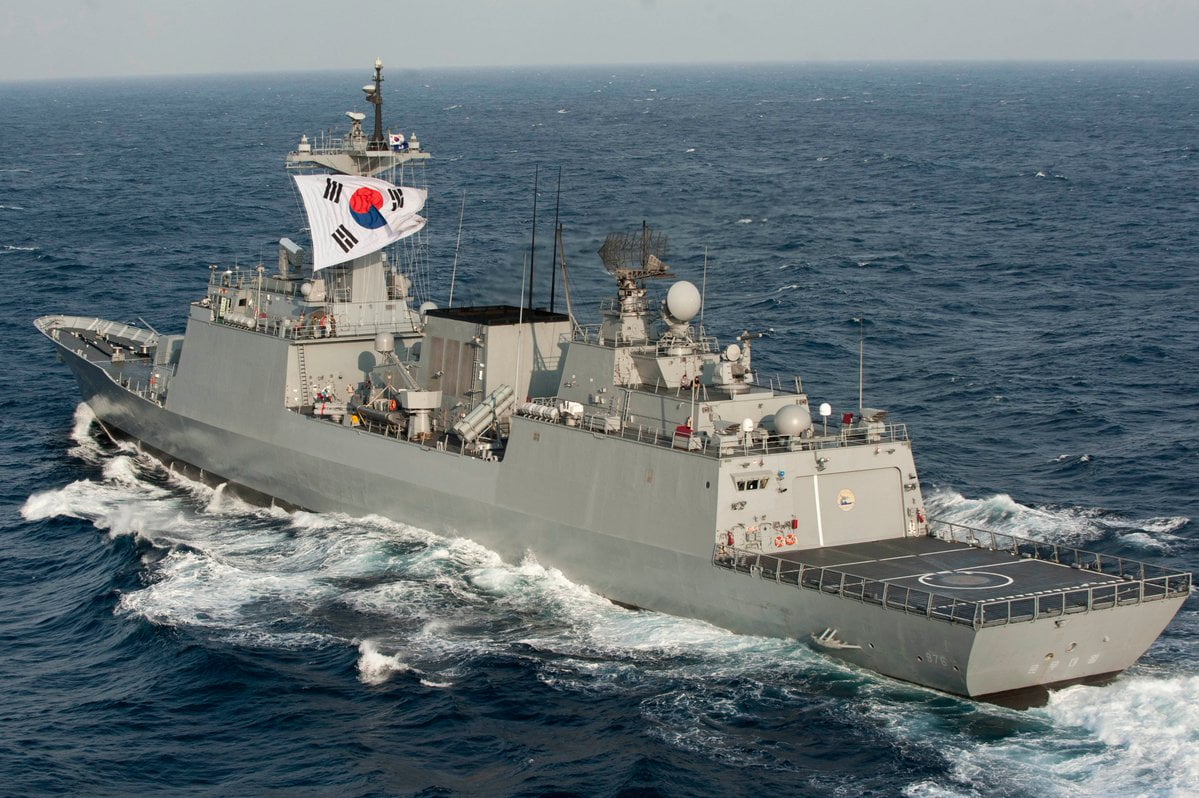
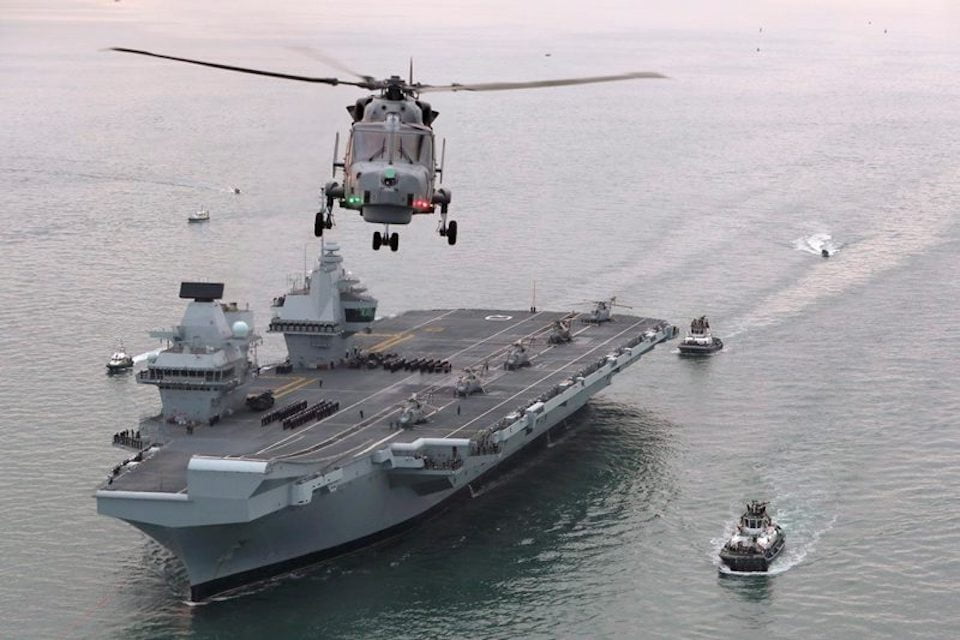
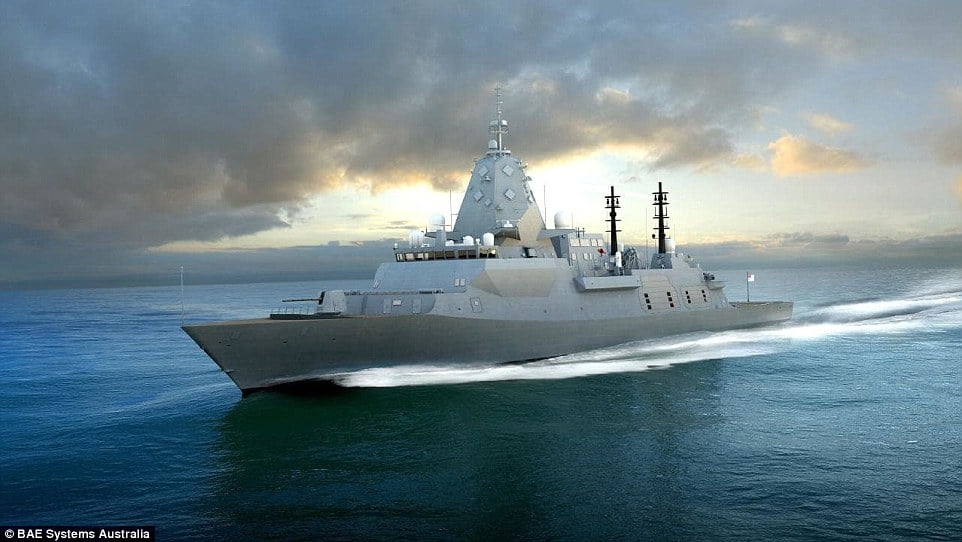
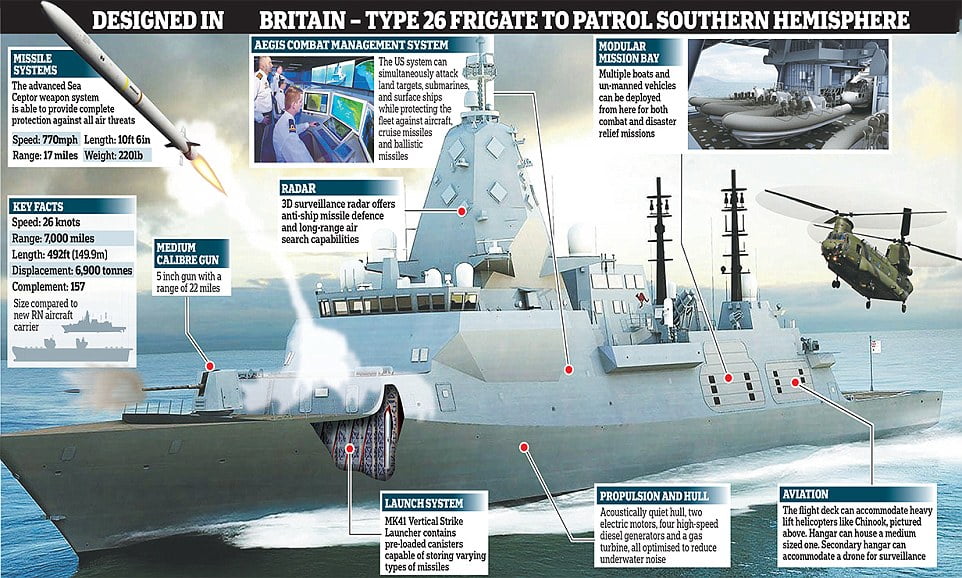 And Australia has indeed selected a UK design for its next surface combatant.
And Australia has indeed selected a UK design for its next surface combatant.